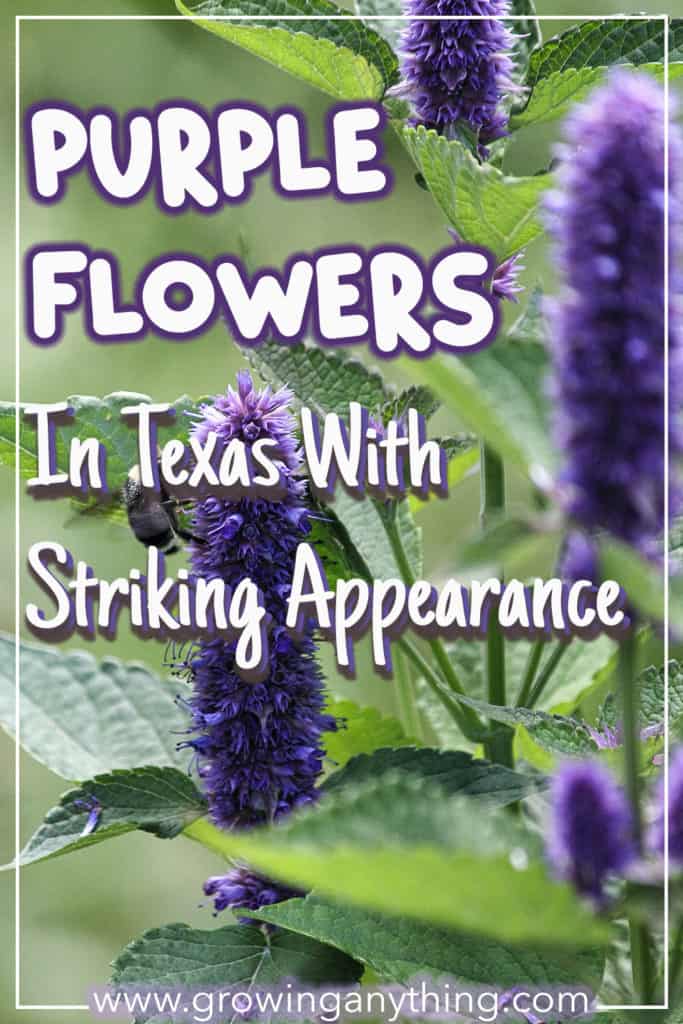17 Purple Flowers In Texas
Are you interested in learning more about purple flowers in Texas? I’ve prepared a list just for you! The following are the most beautiful purple flowers that grow in Texas gardens!
The charming contrast between purple blooms and green grass has always been praised among gardens. Texas climate varies from subtropical areas to arid deserts. Also, the tornado frequency is the highest in Texas. Despite these somewhat harsh conditions, there is a beautiful diversity in purple flowers in the state.
So, the flower population is interesting, from common Viola hederacea to somewhat rare Phlox roemeriana.
Some of them are early bloomers and start appearing in gardens in early spring, while others need summer warmth to bloom!
Keep reading to find out all about Texas purple flowers!
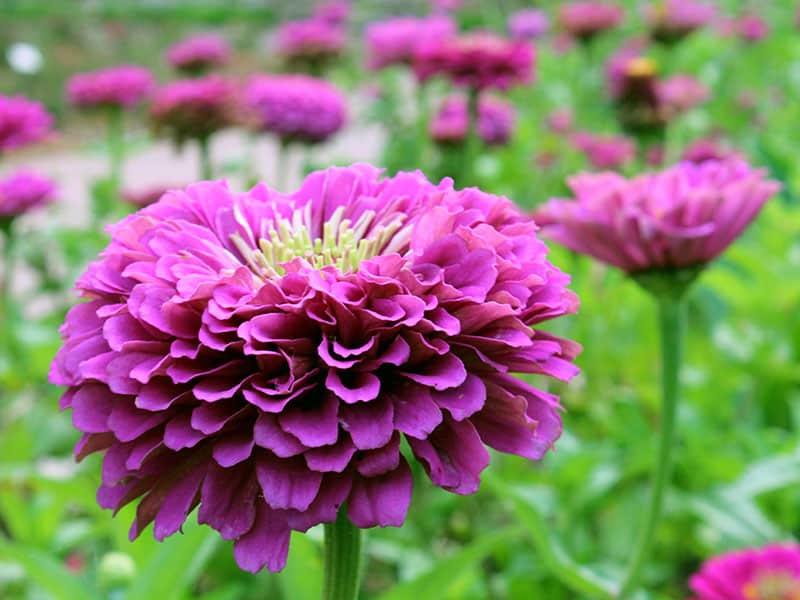
1. Texas Sage
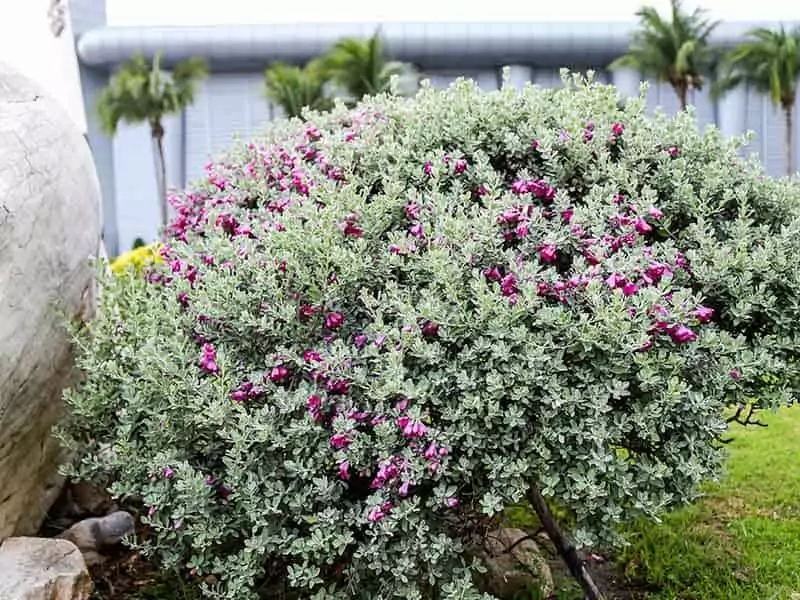
Leucophyllum frutescens is one of the most widely spread flowers in Texas. The common name of the plant is Texas sage, but people also call it Rain or Purple sage. The plant grows as a shrub and has a visual interest in spring, summer, and fall.
Texas sage is often used as a hedge or border plant. It blends well with many other plants and is a common inhabitant of rock gardens.
Texas sage is deer-resistant and tolerates salt well. The plant grows slowly and may need several years to get fully established.
During the first couple of years, the blooms aren’t consistent, and in that period, you need to amend the soil with plenty of water. However, established plants are drought-tolerant and don’t need frequent watering.
More information about beautiful Texas Sage bushes
2. Anise Hyssop
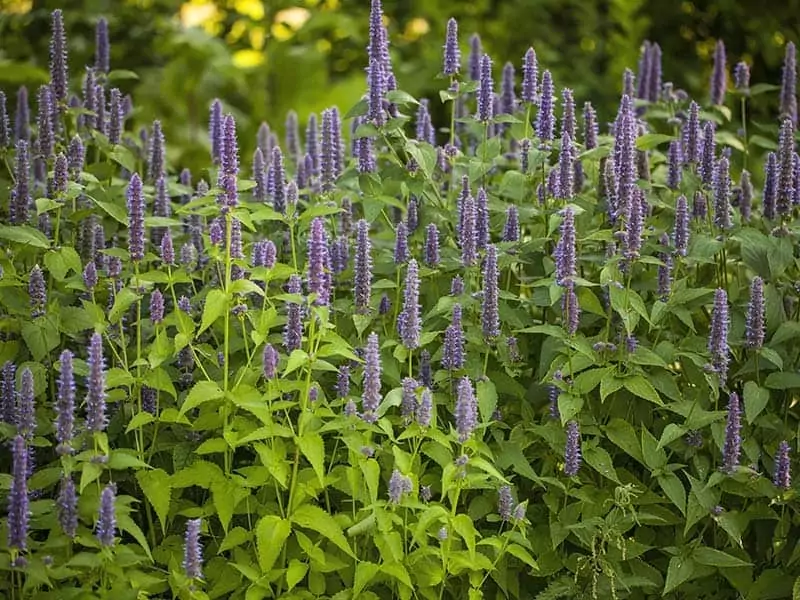
Agastache foeniculum or Anise Hyssop belongs to the Mint family. It is a multi-purpose plant, used in the kitchen and known for its medicinal properties. In addition, Anise Hyssop is also a brilliant addition to every garden with striking lavender flowers!
Overall, Anise Hyssop isn’t difficult to grow. You can grow it from seeds, stem cuttings and start the new plants by division.
Anise Hyssop needs a lot of sunlight. But, in warmer parts of Texas, it can tolerate partial shade. Keep in mind not to plant it near the walnut tree. Anise Hyssop cannot survive juglone toxic properties.
The plant prefers slightly acidic, well-draining soil. Once your Anise Hyssop is established, the plant becomes a low-maintenance plant.
3. Australian Violet
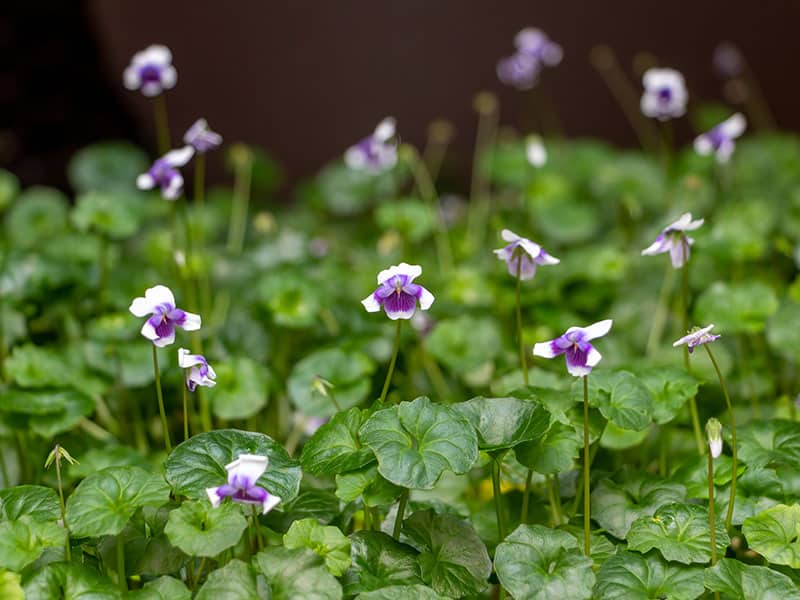
Australian violet is one of the easiest plants to cultivate. It is a trailing plant that often grows on its own, without human interference. The botanical name of the plant is Viola hederacea.
The plant is adaptable to different lighting, soil, and water conditions.
You can grow it in full sun or partial shade location. It can tolerate acidic and neutral soil and all temperatures.
Australian violet is a full frost-hardy plant. It can survive temperatures up to five degrees Fahrenheit.
You can find different varieties in nurseries. Some have prolonged blooming seasons, from spring to autumn. Some varieties bloom in the winter!
4. Mexican Oregano
Here is another bushy plant with beautiful purple flowers – Mexican Oregano. The scientific name of the plant is Poliomintha longiflora.
It is easy to grow in hot and dry areas of the USA, such as Texas. Mexican Oregano is a low-maintenance plant with exceptional drought tolerance. The ideal soil for Mexican Oregano is alkaline and well-draining.
The plant is resistant to most pests and diseases, and a deer-deterrent plant. Therefore, it is an excellent plant to grow in your garden and keep the rest of the plants safe from deers!
Don’t forget to remove the spent flowers of Mexican Oregano. It will encourage new blooms!
5. Texas Bluebell
Texas bluebell or Eustoma grandiflorum grows in Mexico, southern parts of the US, and Central America. You can grow the plant as an annual or biennial plant.
During the blooming season in the summer, it can reach up to 20 inches in height. Attractive flowers can be purple, blue, pink, orange, and red.
Texas bluebell looks stunning in pots on the patio and can be used as a border plant.
The ideal lighting condition is semi-shade. Too much sunlight in summer can burn the plants.
Texas bluebells need a lot of water. The plant will also benefit from a spring application of fertilizer.
You can start the plant from seeds. But because they are small and difficult to handle, I recommend getting established specimens from nurseries. They are easier to handle!
6. Spotted Beebalm
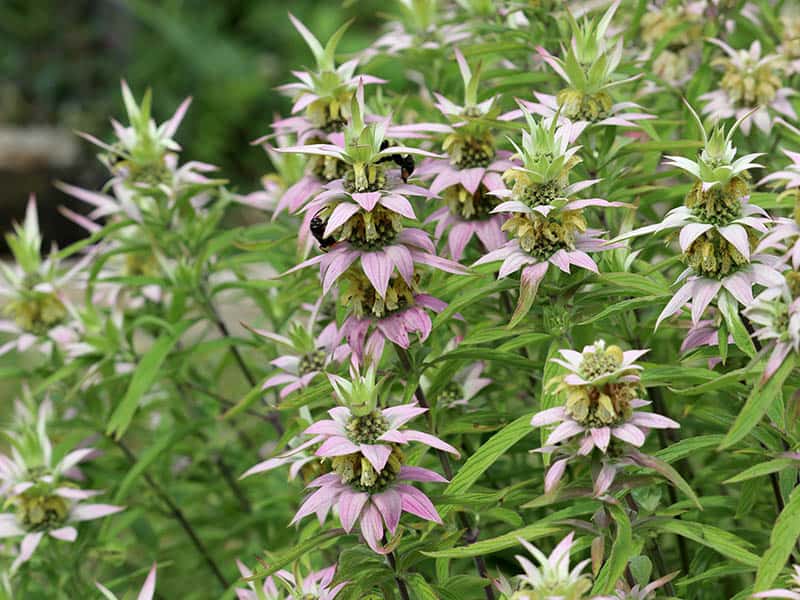
Monarda punctata or Spotted beebalm can be invasive. If you don’t monitor the spread, the plant will invade your garden! You can start the plant with seeds. Sow it in small containers, and transplant it in the soil when the plant gets ready. The alternative is propagation by stem or leaf cuttings.
Ideally, choose sandy and well-draining soil.
Spotted beebalm has survived a lot without moisture. However, if you ensure a steady amount of water, your spotted beebalm will stay good-looking, and it will bloom longer!
The plant is a hardy perennial, and will come back every year to grace your garden with lovely purplish blooms!
It attracts butterflies and is attractive to beneficial insects!
7. Eryngo
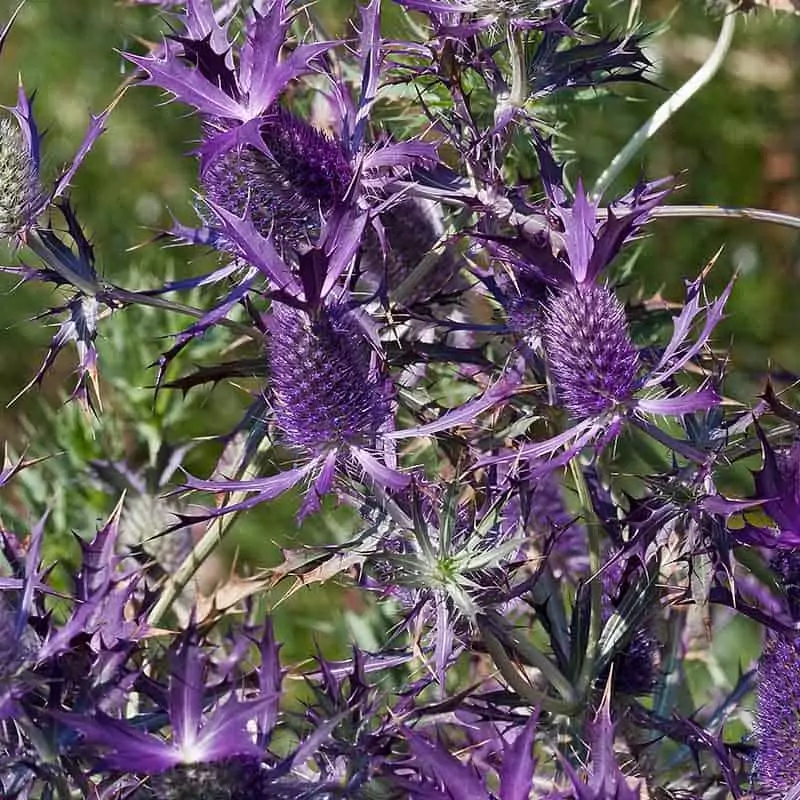
Eryngo is a well-known Texas wildflower! The plant features beautiful, small flowers with spiny bracts and deeply lobed foliage. The plant usually grows as annual. Don’t forget to wear gloves when you work around it, because the leaves are thorny!
Only some nurseries offer the seeds for the Eryngo flowers. Let the seeds germinate for a week in a warm environment. The rest of the care is simple!
The blooming season starts in the late summer.
8. Goldeneye Phlox
Phlox roemeriana or Goldeneye phlox is endemic to rocky solids of Texas. The plant blooms vary from pink to deep purple.
These flowers are easy to recognize by purple stars in the centers, surrounded by lavender petals and a yellow hue.
People call it fragrant Phlox because of the rich aroma flowers disperse to attract beneficial insects.
Overall, Phlox is an easy to grow and low-maintenance plant. Grow it in moderately moist soil with excellent drainage. Phlox can grow in loamy, sandy, clay soil, and rock slopes!
The plant needs at least six hours of sunlight but can adapt to light shade. If the plant is under stress, you’ll notice yellow leaves.
9. Winecup
Callirhoe involucrata or Winecup prefers bright spots and well-drained soil. The plants grow best in gritty and sandy soil, but they can adapt to the lower quality soils.
You can start Winecups from tubers or seeds. Winecups are appreciated for their low-maintenance nature and exceptional resilience to pests and diseases. Their attractive flowers are an additional plus!
If your area has a lot of rabbits, protect young plants, as rabbits like to feed on them. Mature plants aren’t attractive to rabbits, and they don’t need any protection.
The blooming season starts in June and lasts through July. Ideal landscape use for Winecups is ground cover or low border plants.
10. Purple Coneflower
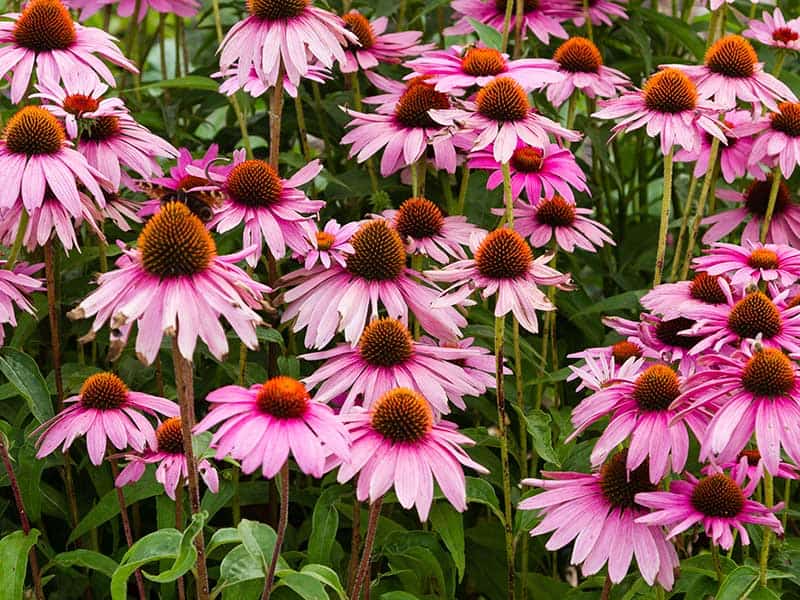
Purple coneflower or Echinacea purpurea is one of the most beautiful flowers in Texas. It can tolerate poor-quality or lean soil. Interestingly, if you grow Purple coneflower in rich soil, the plant will develop lush foliage and very showy flowers.
Purple coneflowers need a lot of sunlight, at least six hours per day. They are easy to grow flowers with amazing visual effects.
You can grow them if you want to brighten your early fall landscape! In general, Coneflowers are available in various colors. The purple ones look the most spectacular!
They are also great flowers to attract butterflies and improve your garden appearance with minimal effort!
The plant features clumping forming habits. Some cultivars are more invasive than others, but you should check these details in the nursery. Use the information to decide how to space your coneflowers!
11. Indian Blanket
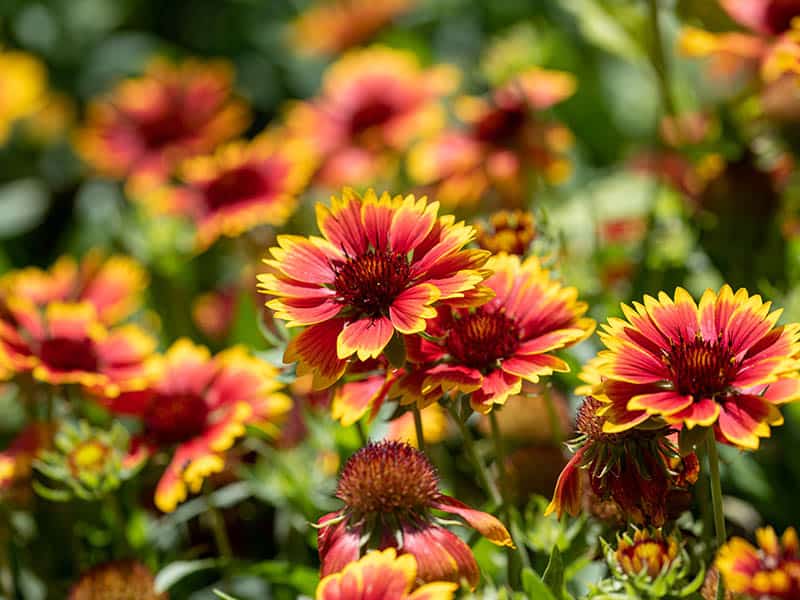
Gaillardia pulchella or Indian blanket or Firewheel is an annual plant. It is easy to grow in the central and southern parts of the United States. Indian blanket is easy to grow from seeds and the plant will award you with stunning red-purple clusters with minimal effort.
The flowers are small, but they form dense colonies and have a lovely visual impact. The blooming season is long, from May to September. These flowers are also great cut flowers. They look attractive in floral arrangements and can stay fresh for up to ten days.
They require warmth and full sun to grow. Additionally, well-draining soil is a must for the Indian blanket to survive.
12. Gayfeather
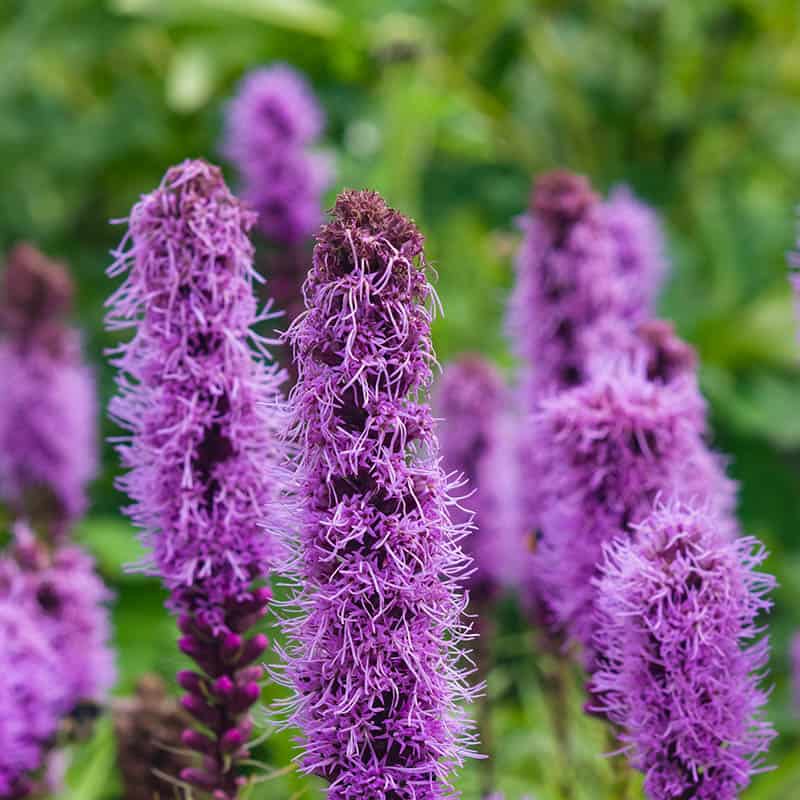
Gayfeather is also known as the Blazing star plant. The botanical name is Liatris mucronata.
Gayfeather is an easy plant to grow from seeds. The germination lasts about one month, and lighting and warmth are required.
When the seedlings are ready for transplantation, choose a bright spot in your garden. Gayfeather thrives in fertile soil and with regular watering. The plant can tolerate poor quality soil and drought, alongside extensive heat, high or low humidity, and cold temperatures.
Gayfeather is also one of the deer-resistant purple flowers in Texas!
If you want to encourage blooms, you should regularly remove dead flowers.
The plant is also valuable for every garden! It attracts beneficial insects – birds and butterflies, and hummingbirds.
Gayfeather can be used for landscaping in various ways. You can plant it in flower beds, used with other flowers on the garden border.
They also mix well with ornamental grass with echinacea and rudbeckia flowers.
As cut flowers, Gayfeather is used fresh and dry.
13. Purple Verbena
Verbena is one of the common plants in Texas around roads. The blooming season starts in March and lasts for several months. You can grow it in partial shade or full sun.
Verbena isn’t picky about the soil type or pH. It only needs well-draining soil and moderate moisture to grow!
After planting, you’ll have to water the plant thoroughly until it gets established. Mature plants are drought tolerant, but you can provide moisture during dry spells.
The flowers attract butterflies and bees.
Harvesting Verbena seeds for new plants
14. Zinnia
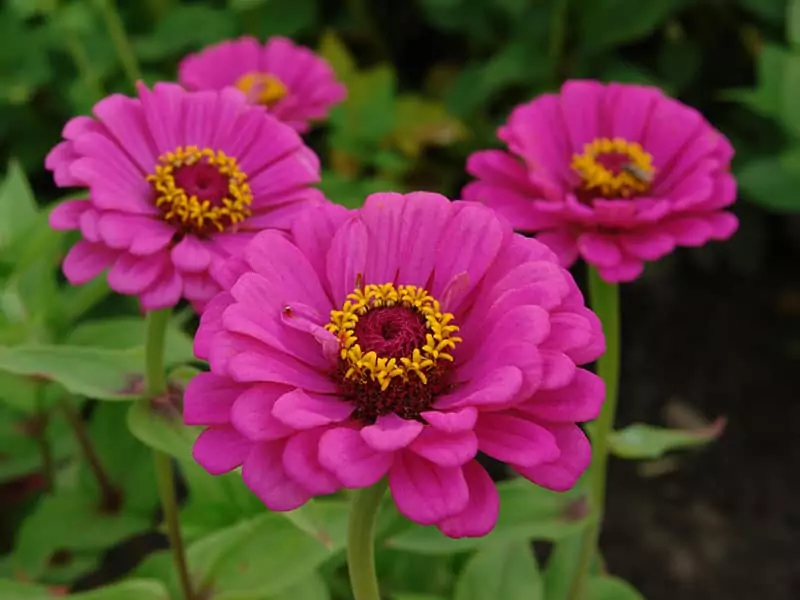
Zinnia elegans, shortly Zinnia, is a very common garden inhabitant in North Texas. Plant Zinnia seeds in garden soil in April, and enjoy beautiful summer blooms. If you repeat the process in July, your garden will brighten up with Zinnias in Fall again. Check the instruction on the seed package to see more about seed spacing.
Zinnias are a better choice for Texas climates than chrysanthemums. Zinnias blooming season is longer and the plant tolerates the hot Texas climate very well.
You can add compost in Zinnias flower beds to improve the soil quality. Pinching will also encourage bushier growth!
Best gardening hacks for striking Zinnias.
15. Dianthus
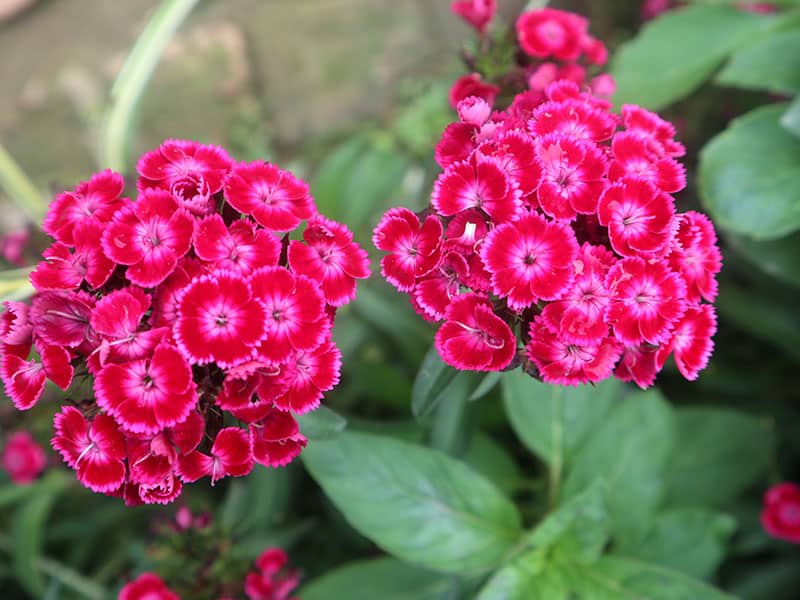
Dianthus caryophyllus requires moderate sunlight exposure. Ideally, the plant needs bright morning sun to thrive. You can also use balanced fertilizer with an equal percentage of nitrogen, phosphorus, and potassium every two months to boost growth.
Also, Dianthus benefit from dead heading, because it promotes new blooms!
In Texas, Dianthus is a perennial. It is a common spring bloomer, but some cultivars also rebloom in autumn in mild weather.
The plant is easy to grow, but you have to water it carefully. Regular irrigation is recommended, but over-watering can kill the plant. Always water the plant in the morning, and at the plant’s base to prevent diseases.
16. Alyssum
Lobularia maritima or Alyssum is a famous Texas gardening superstar! The plant can survive Texas heat in full sunspot! The plant is short and develops tiny charming flowers which spread mild and sweet fragrances.
In general, Alyssum is a disease-free plant, but aphids may attack the plant occasionally.
The plant loves full sun exposure, but slight shade will be a better choice in dry areas. Ideally, Alyssum should receive at least one inch of water per week. During summer, you can increase the irrigation to keep the foliage fresh.
You don’t have to fertilize Alyssum unless you planted it in poor-quality soil.
17. Aster
Aster grows best in well-draining soil. Mature plants need only a tiny amount of water and are sensitive to overwatering. You don’t have to fertilize Aster, but occasional feeding might encourage foliage growth.
Aster needs a minimum of four hours of sunlight. The plant can survive partial shade, but will look best if you provide more sunlight hours!
Aster is one of the most loved native Texas plants, which blooms in the fall! The plant is attractive to bees and butterflies!
Texas Purple Flowers – Unnoticed Beauties With Stunning Effects
Have you decided which purple flowers you’ll choose to plant in your garden? Verbena is always a good idea, but Winecups or Zinnias are more striking!
Overall, the decision is difficult! The mentioned purple flowers are low-maintenance and beautiful in all Texas landscapes, from cottage gardens to garden borders and rocky slopes!
If you enjoyed the article, please hit a thumbs-up button and share the article with your friends and family!
